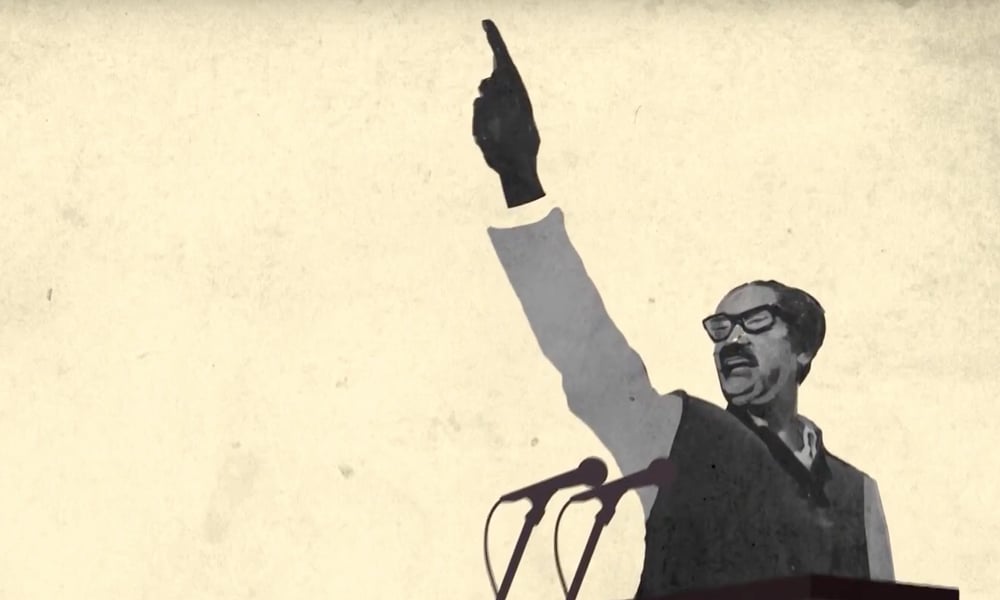2711
Published on April 9, 2022Dr. Atiur Rahman:
Sri Lanka is one of our close neighbors. We are deeply pained to see what has been unfolding there. What is more painful is that a vested quarter has been trying to cash on the miseries of this beautiful South Asian peer of ours in undermining the potential of Bangladesh (which has already demonstrated its macroeconomic strength) by comparing ‘an apple with orange.’ These two countries have different trajectories of growth with different strengths and weaknesses of their own.
Sri Lanka was destined to be the Singapore of South Asia. I was simply amazed to see Sri Lanka flourishing so well in the 1980s when I first visited that country. The macroeconomic strength of the country was rated as investment-grade by global rating agencies. Many central banks including ours invested in Sri Lankan sovereign bonds to diversify their reserves. Despite a deadly civil war for about 26 years the economy continued to boom. The per capita GDP surged from 1,436 US dollars in 2006 to 3,819 USDs in 2014. The country joined the World Bank’s group of Upper Middle-Income Countries demonstrating a huge strength of macroeconomic transformation. However, all this came at a cost. The external debt tripled between 2006 and 2012 pushing the public debt to GDP proportion to 119 percent. The external debt to GDP proportion has been pushed to 70 percent by now. The interest payment on a large debt for projects (like ports and airports) yielding not many immediate returns went up to 72% of the government revenue, requiring the central bank to print more cash to avoid default. This restrained the government from providing more support to social protection to the affected population that was grinding under the wheels of double-digit inflation.
Unfortunately, in recent years the country faced several political, natural, and social shocks creating more uncertainties on the economic front. A constitutional crisis in 2018, Easter bombings in churches and luxury hotels in 2019 killing hundreds of people and natural disasters like heavy monsoon and floods put severe blows to the economy. Above all, the sudden outburst of Covid-19 made the economic crisis of Sri Lanka further vulnerable.
The overall response to the economic crisis by the government was not adequate. The populist economic policies without making serious research and simulations made the credit rating agencies concerned. The government went for slashing taxes in a doomed attempt at stimulating the economy. The banning of the import of chemical fertilizers to go for full-scale organic fertilizer use reduced the production of rice and other agricultural products. On the other hand, payment of foreign debt obligations constrained the import of fuel, gas, and many food items. The import ban on 350 non-essential items including milk, oranges and household appliances has made the middle class extremely unhappy. The country had to go through a prolonged curfew to quell the protests.
However, the biggest crisis originated from the mismanagement of its macro-economy as the country leveraged high-interest bilateral loans (going up to six-plus percent) without making a thorough need assessment and returns from investment analysis. The result has been raising the public debt to GDP ratio against the backdrop of falling foreign exchange reserves. The latest reserve position has gone down to about 2.02 billion US dollars while the country is required to pay about four billion USDs this year to its lenders including about one billion USDs repayments on the sovereign bond to the investors. Initially, Sri Lanka hesitated to fall back on IMF and World Bank for bailouts as that would have meant accepting ‘bitter pills’ of conditionalities related to economic restructuring and liberalization with serious short-term impacts. Instead, it went to regional peers to help the country. Both India and Bangladesh came forward to ease the foreign exchange pressure a bit. It has also asked China to give more support. Also, it is now preparing itself to ask for IMF help. However, social, and political situations deteriorated to a level that may not be conducive to cutting these deals fast enough to cool the people’s protests against the backdrop of a huge scarcity of daily necessities. Unless the import of food, fuel and other daily necessities can be immediately restored to boost the supply chains it will not be easy to cool down the heat of the economic crisis. Mind it, the inflation has tripled over the last five months reaching now to 17.5 percent.
Moreover, the floating of the exchange rate of the Rupee to align its policy with the expectation of the IMF has led to the free fall of its currency against US dollars. The inflow of foreign remittances has also been drastically reduced due to uncertainty in the economy. People are simply not selling dollars in the market seeing the free fall of their currency. Due to the Russia-Ukraine war, the flow of tourists from those two countries has been stopped with the closure of Moscow bound flights.
Given the above scenario, let us now throw some light on the Bangladesh economy to see whether it resembles or not the Sri Lankan economy. With consistent political stability, Bangladesh's economy has been growing persistently over the last twelve to thirteen years despite the pandemic. The per capita GDP growth has been the very best in emerging Asia surpassing China, Vietnam, and India. Agriculture, remittances, and export (including of RMGs) have been the main pillars of Bangladesh's economy. Despite some recent pressure on Bangladesh Taka arising from the growing trade deficit, Bangladesh has managed its external economy well as reflected in rising foreign exchange reserves now exceeding 45 billion US dollars. The Taka to USD exchange rate remains stable with the gradual devaluation of the domestic currency and continued intervention in the foreign exchange market by the central bank. Like most countries of the world the supply chains of imported goods like, fuel fertilizer, gas and food have been disrupted by the Covid-19 and the latest Russia-Ukraine war. However, Bangladesh has been managing the supply chains prudently to keep the flow of imported goods intact. The imported inflation has been showing its ugly face but not much. The government has come up with several innovative food supply augmenting programs reaching more than ten million people to ease the food inflation. The overall inflation remains around six per cent. This is not even a third of the Sri Lankan inflation. However, with the arrival of Boro rice in the market within a fortnight or so, the food inflation will be further tamed, hopefully. The government has also embarked on improving the supply chains of commodities being transported from the villages to the wholesale markets by removing the informal interventions by local distractors. No doubt, Bangladesh has been implementing several megaprojects with domestic and external resources. These are well-planned ‘game changer’ projects likely to improve both investment and employment situations in Bangladesh. The Padma alone will add more than one percent to GDP growth in Bangladesh. So will Matarbari deep-sea project, the metro rail, and other infrastructural projects. The challenge is to fast track the implementation processes of these projects, particularly those that will cut the distance and yield more employment and returns on investment, attracting thereby more FDIs. In the backdrop of these potential of yields, the debt to GDP proportion in Bangladesh remains within the comfort zone. Moreover, as indicated by our Premier during a parliamentary intervention, Bangladesh has been maintaining an excellent record of repayment of debt instalments. It was never near to a default embarrassment and will never be so any time in the future given its stunning macroeconomic stability. Our public debt to GDP proportion remains around 38 percent and that of external debt at about 13 percent. Although the interest rate paid as a proportion of total government revenue (21.9% in 2019-20) is creeping up, the overall revenue collection has also been picking up. As of March, the growth of revenue collection has been 15 percent, not a bad deal in the post Covid-19 context.
However, the Tax-GDP ratio remains low around ten percent which calls for actions in the form of faster digitization and ease of payment of the revenue collection processes. The digital financial services in Bangladesh have been an eye-opener for policymakers in terms of reaching the bottom of the social pyramid with the desired public services. I can go on telling my readers how robust Bangladesh's economy has been defying all challenges including the pandemic and the Ukraine war. That’s not the focus of this commentary. What I wanted to say is that the two economies are not simply comparable. Some people are up to undermining both the economies that have been trying their best in facing the challenges, local and global. Bangladesh has, of course, demonstrated its strength in macroeconomic transformation in addition to reaching the lower rungs of the social pyramid. Undoubtedly, we must go a long way to overcome many existing challenges. But that does not mean that we should continue to shoot our own feet to show the world how bad we are! Of course, Bangladesh must remain cautious about growing external debt, particularly from those sources that charge at higher rates, to fortify our macroeconomic stability.
Writer: Economist and former Governor of Bangladesh Bank
Courtesy: Daily Sun














